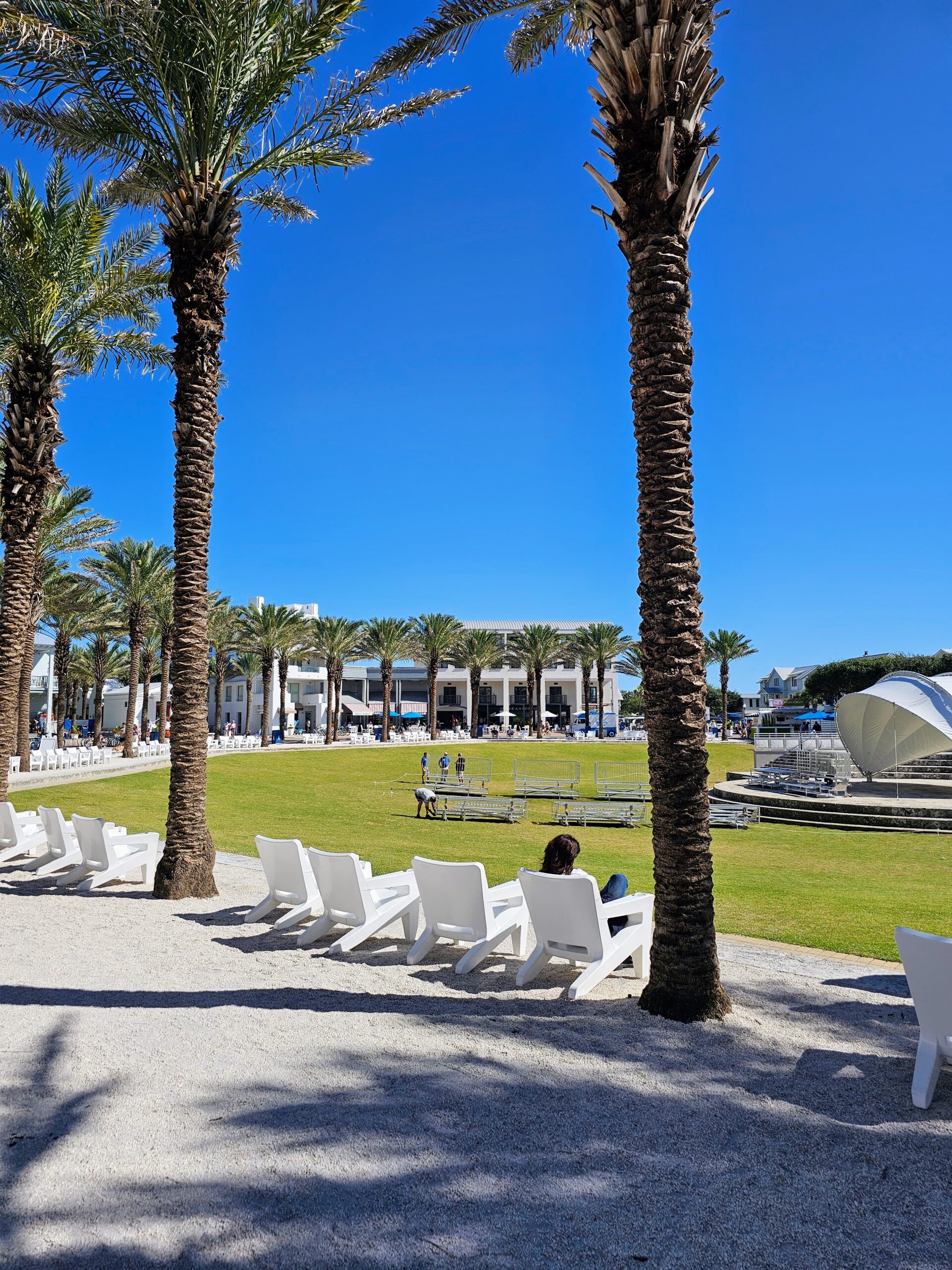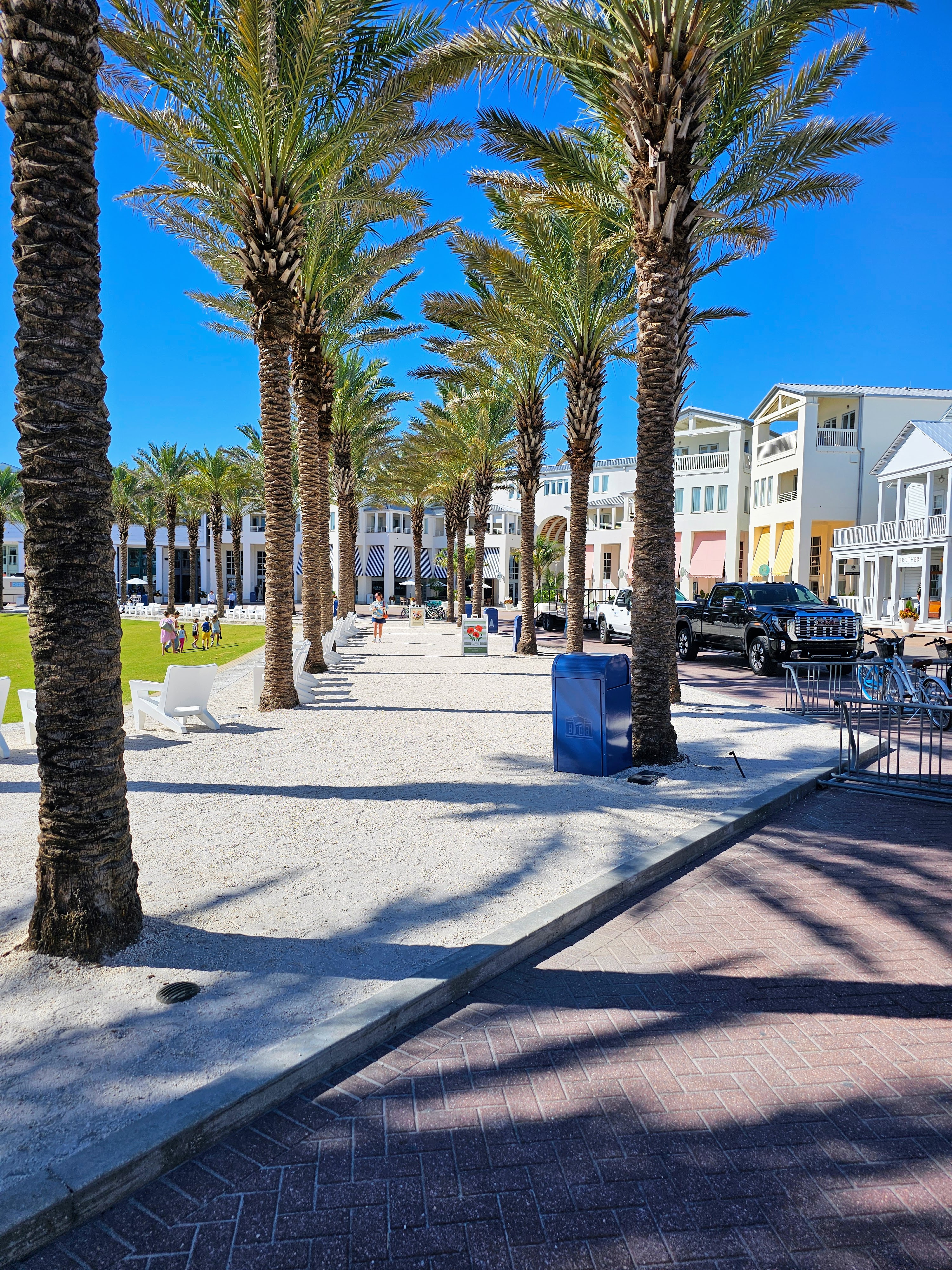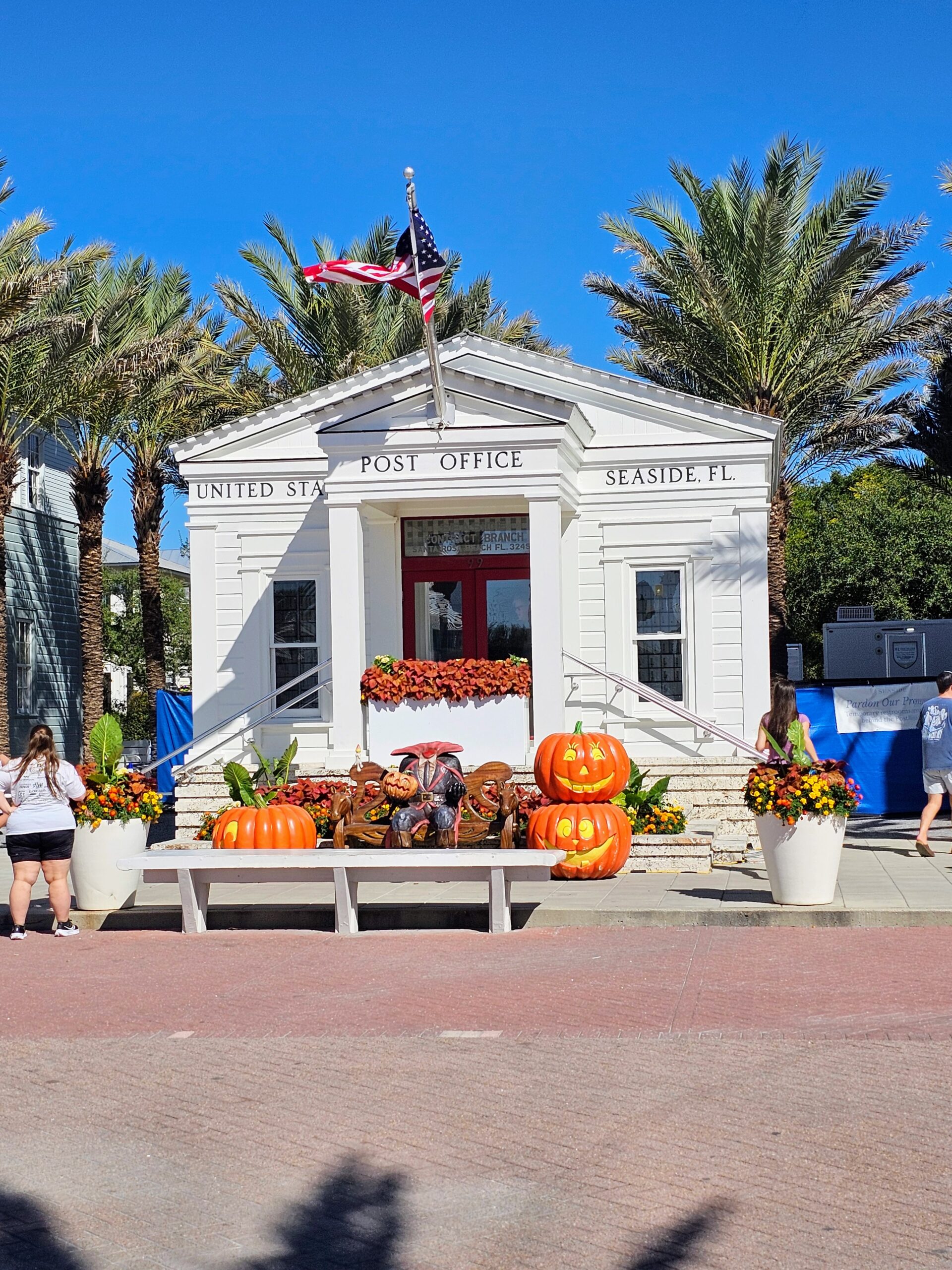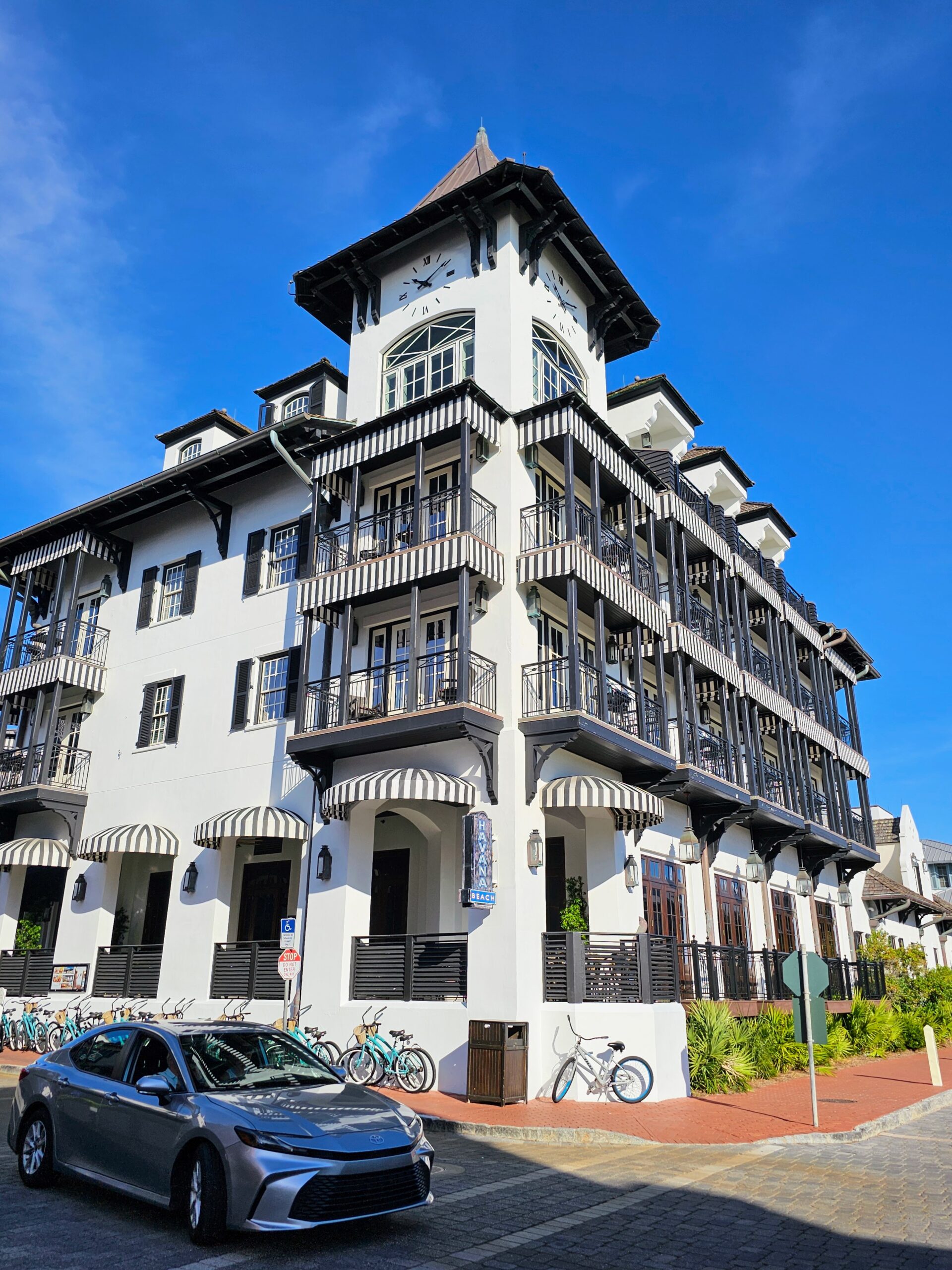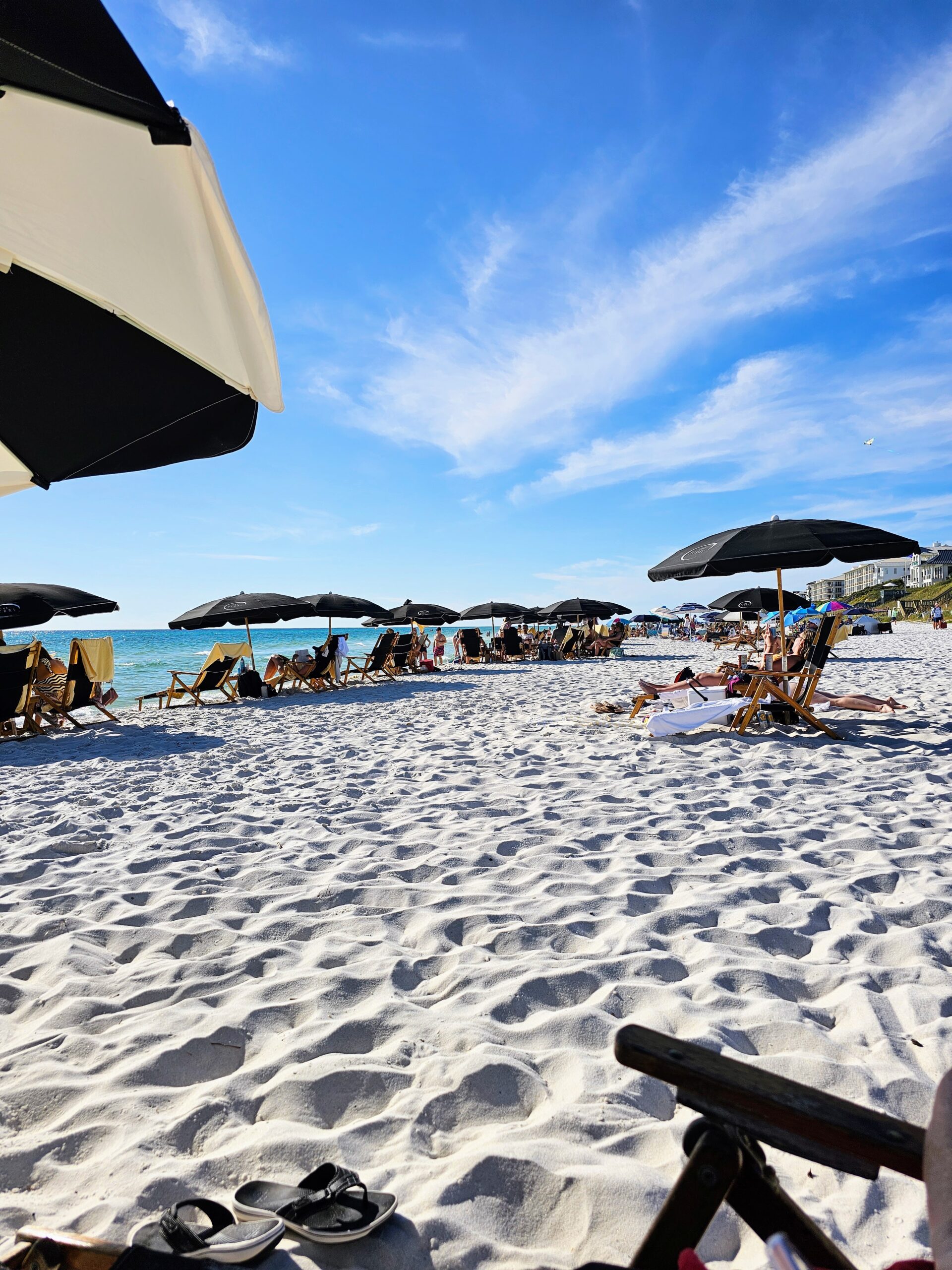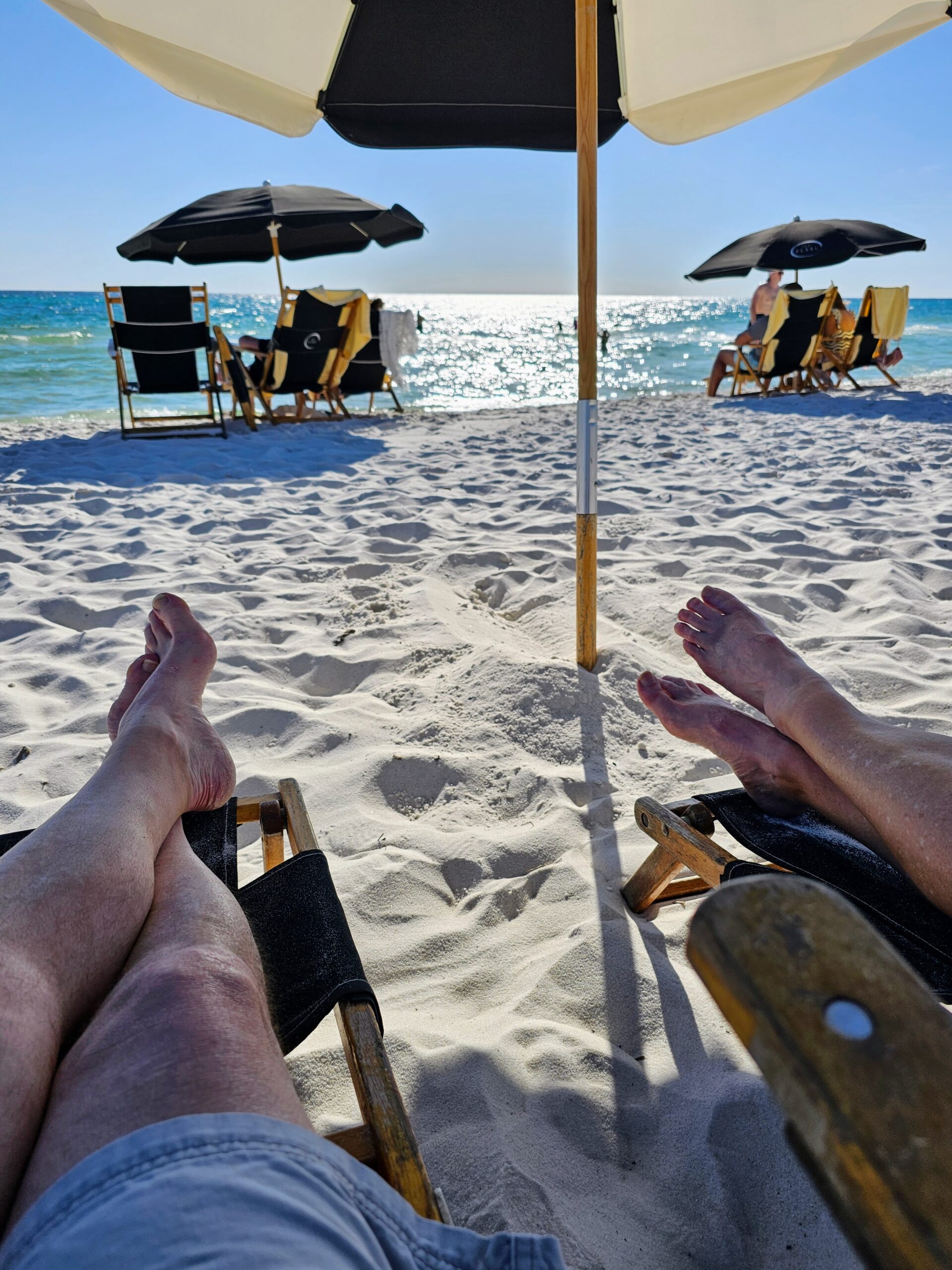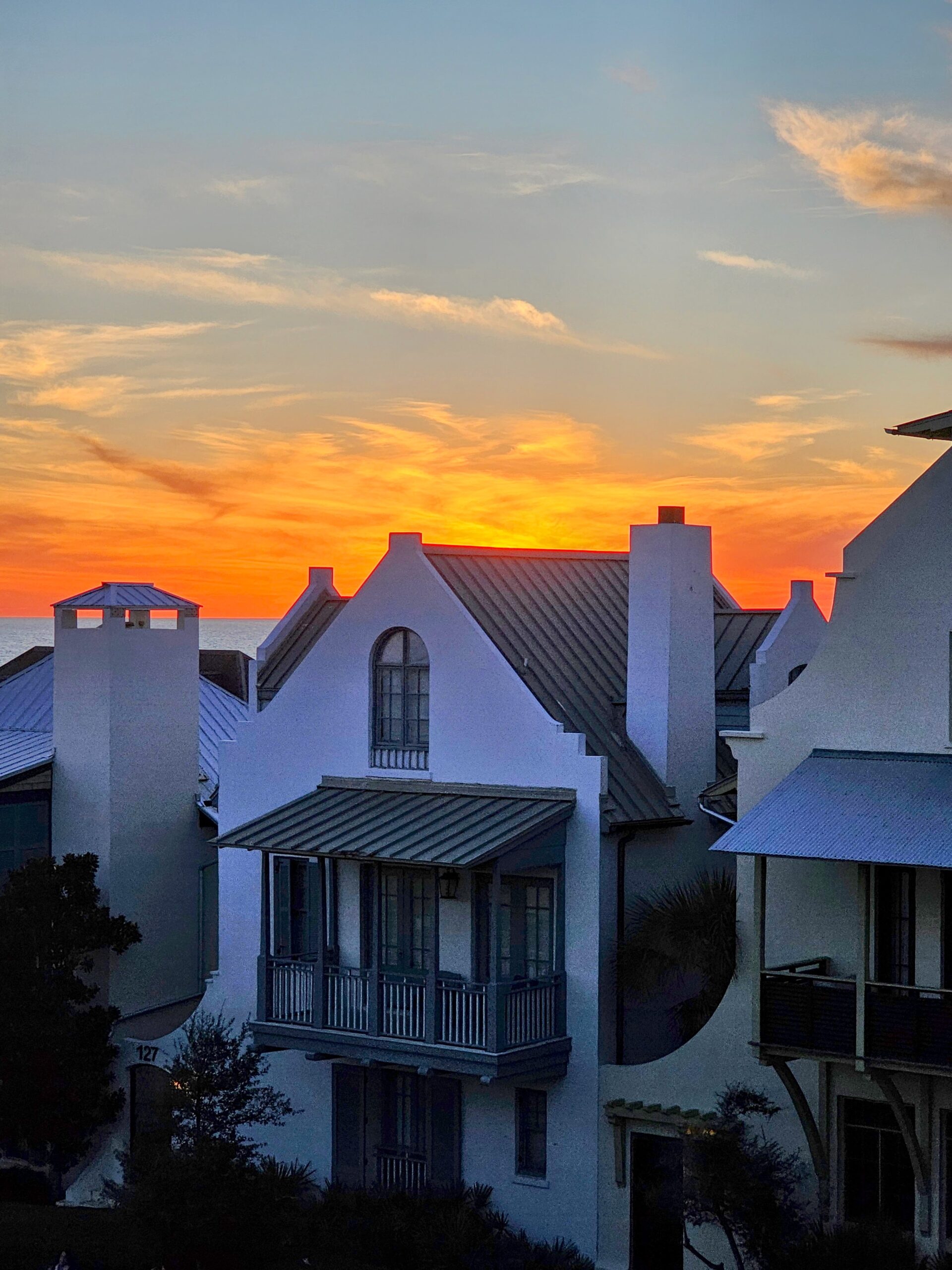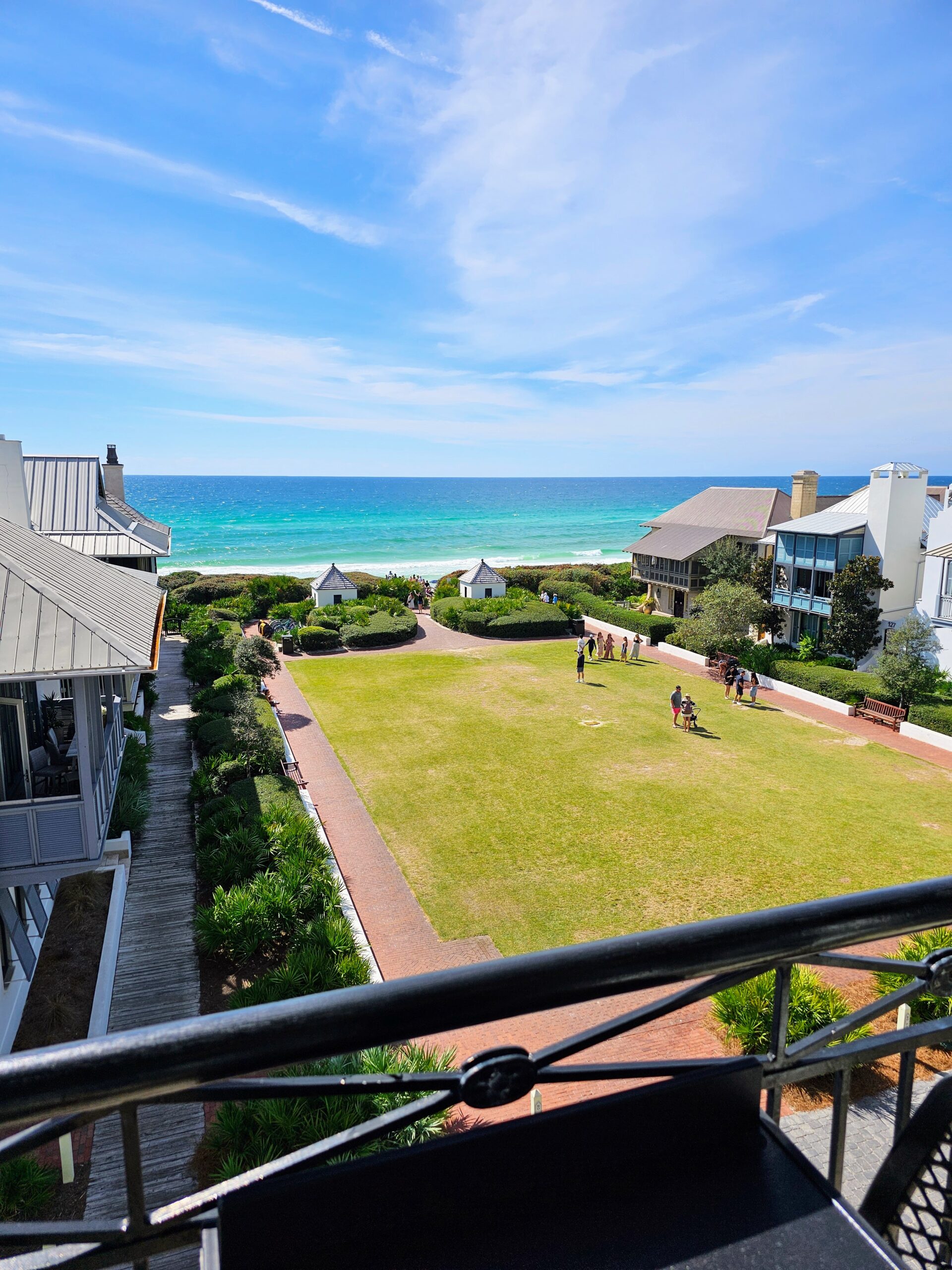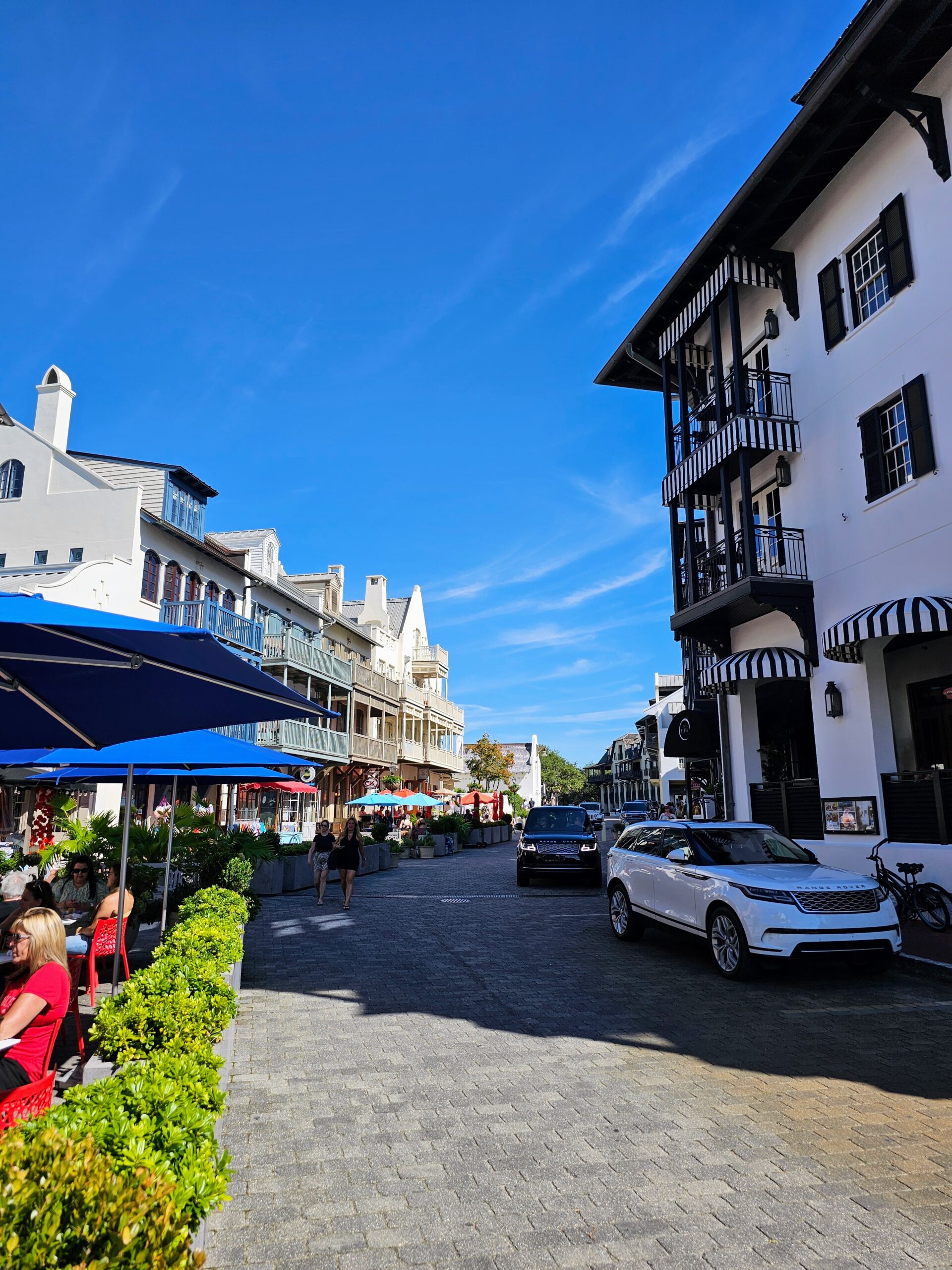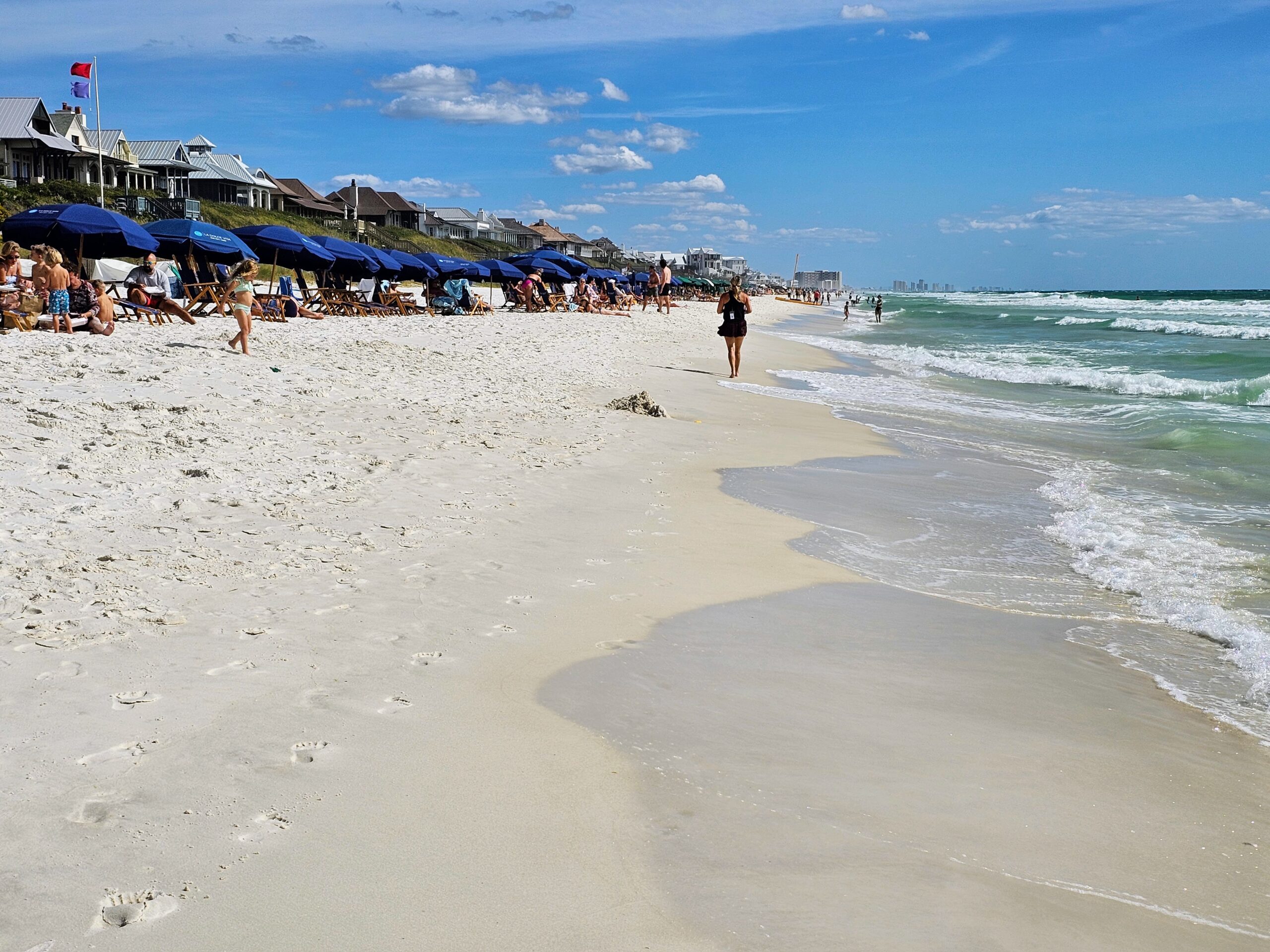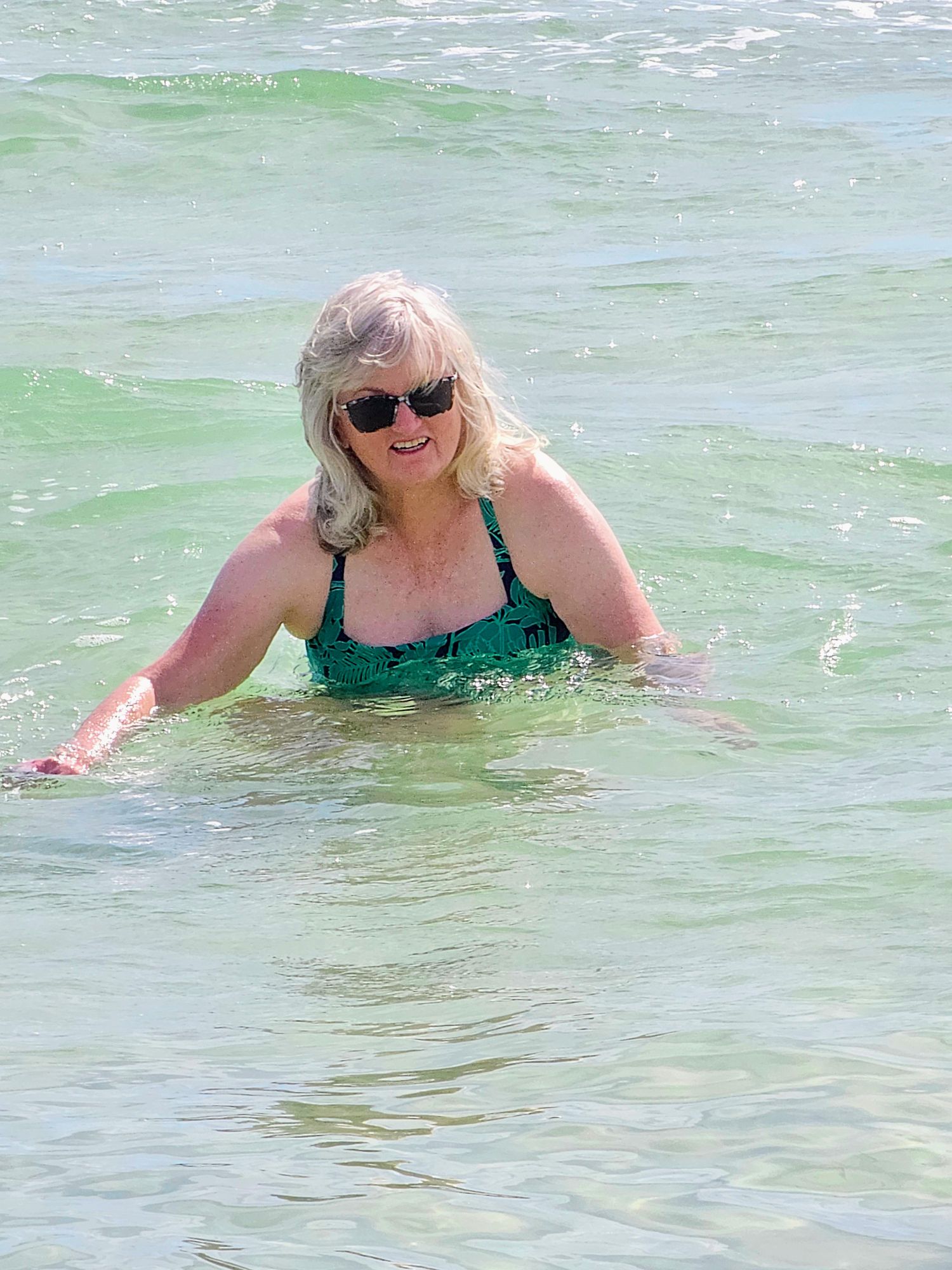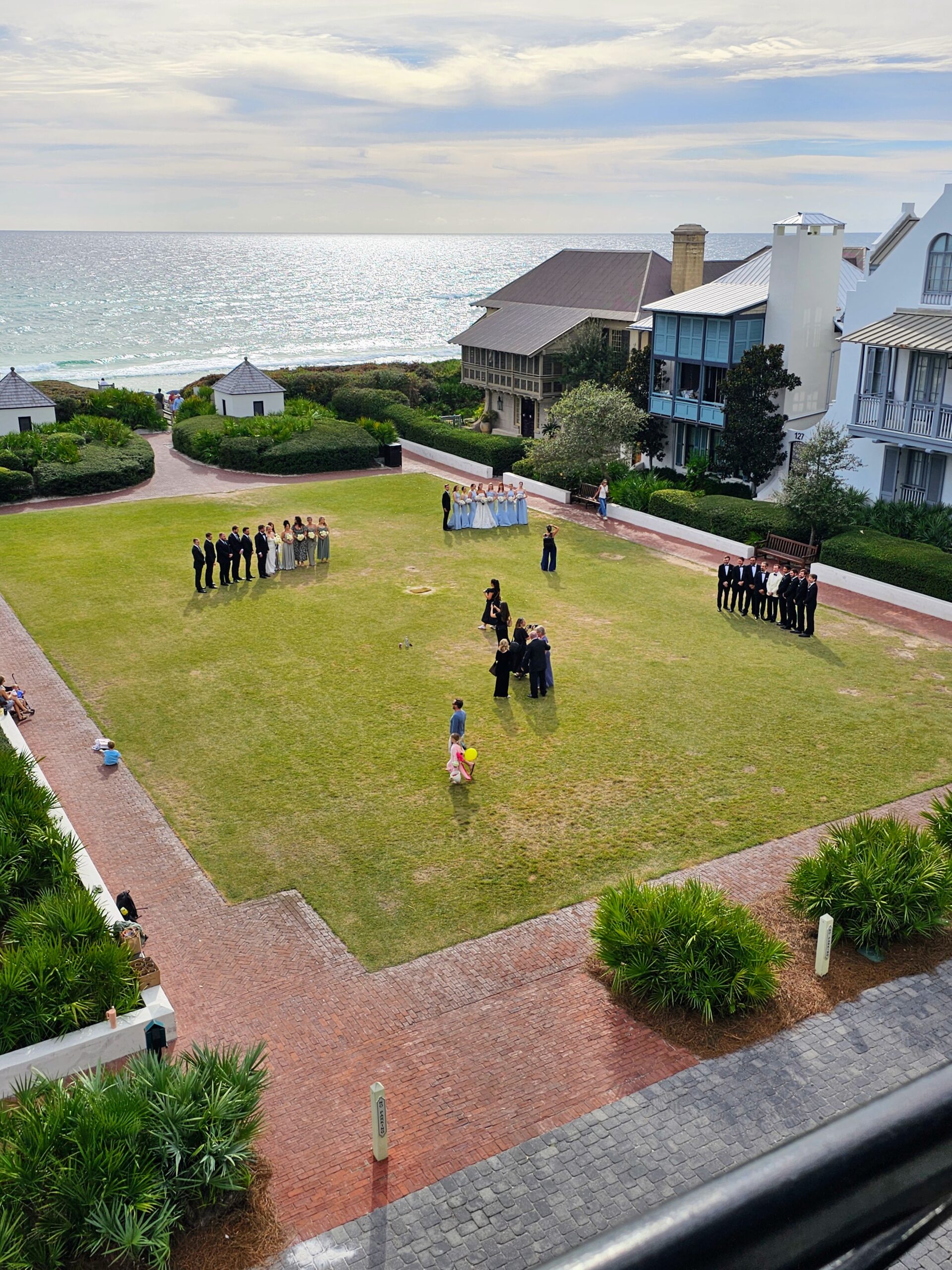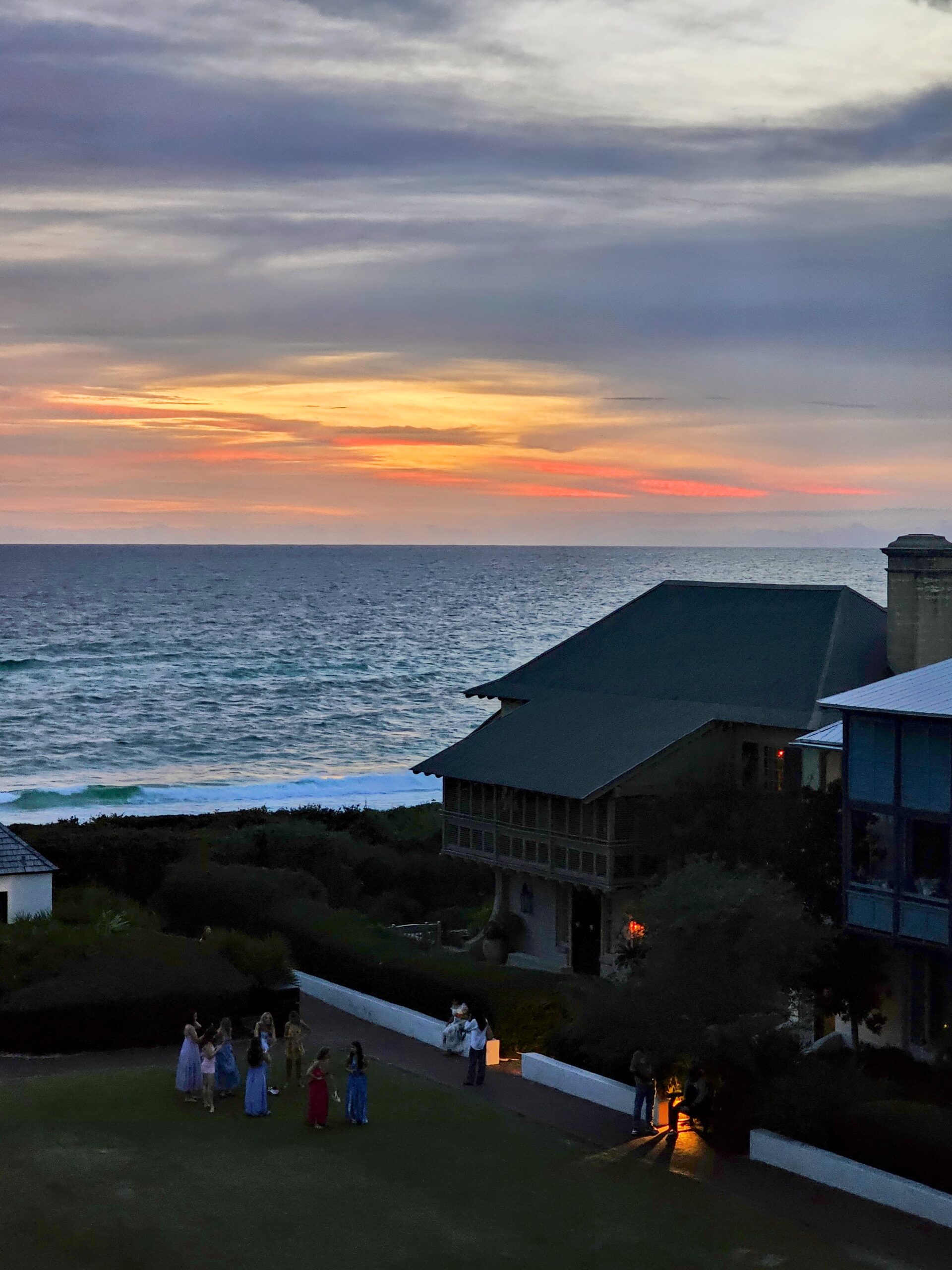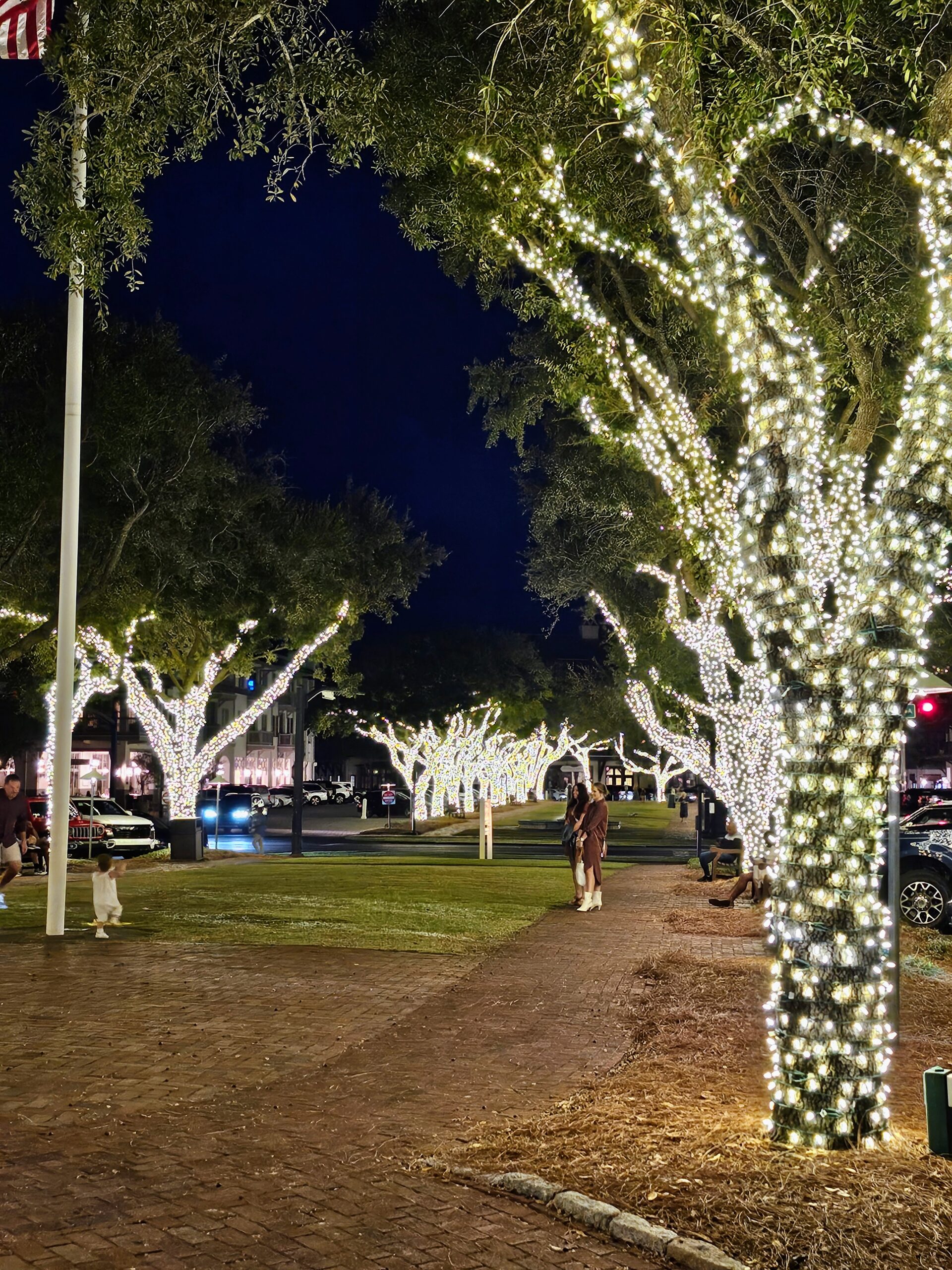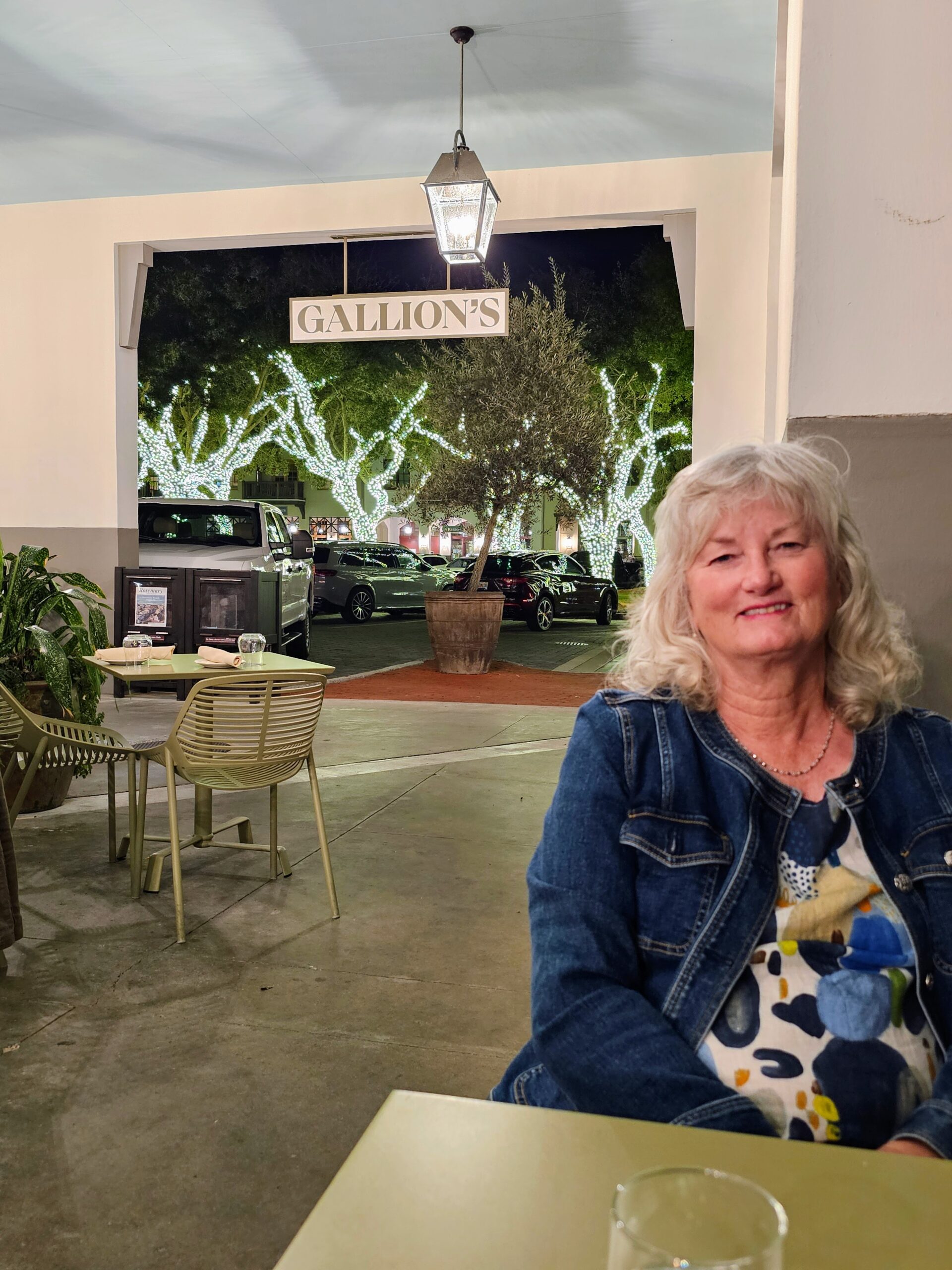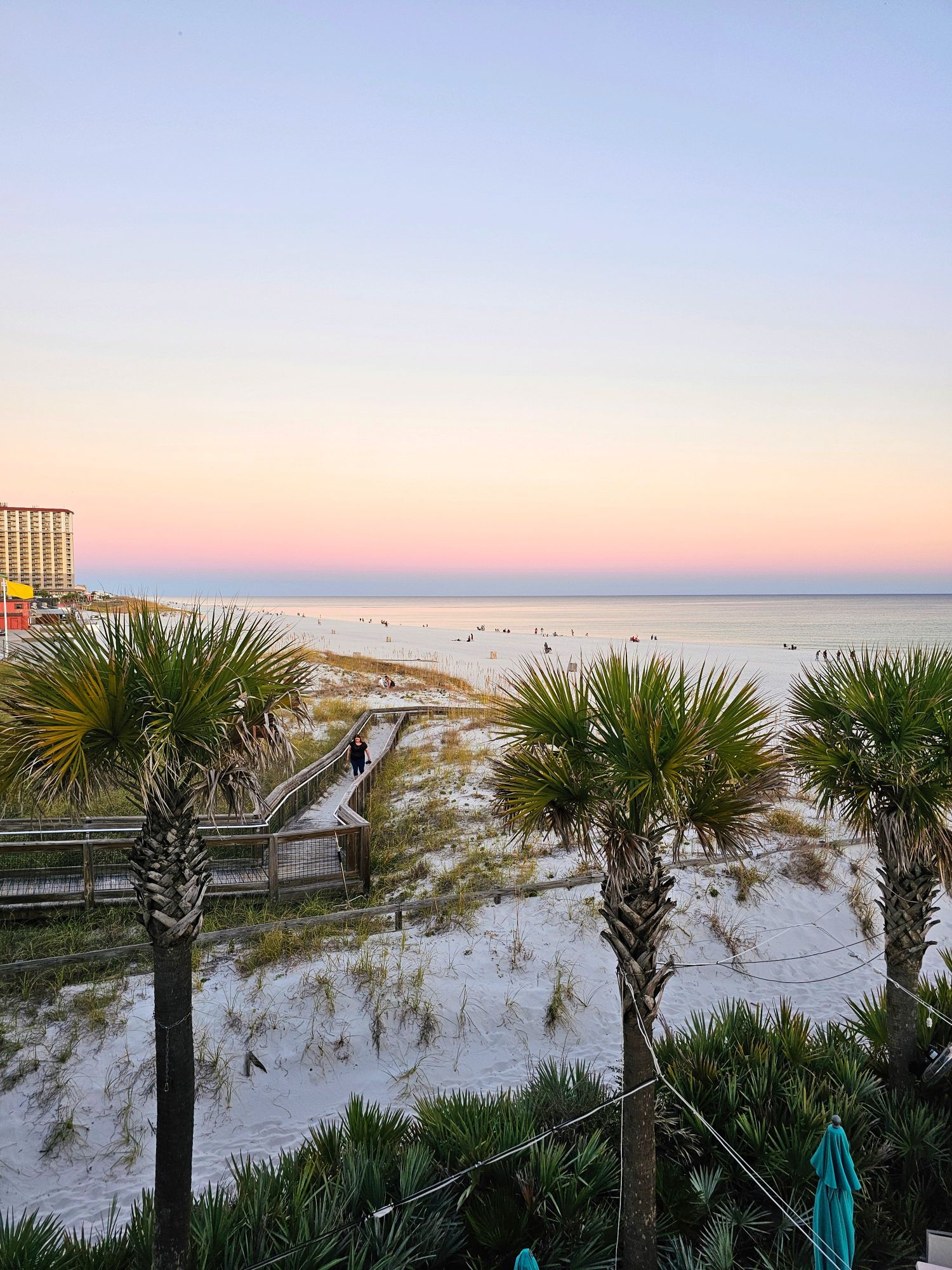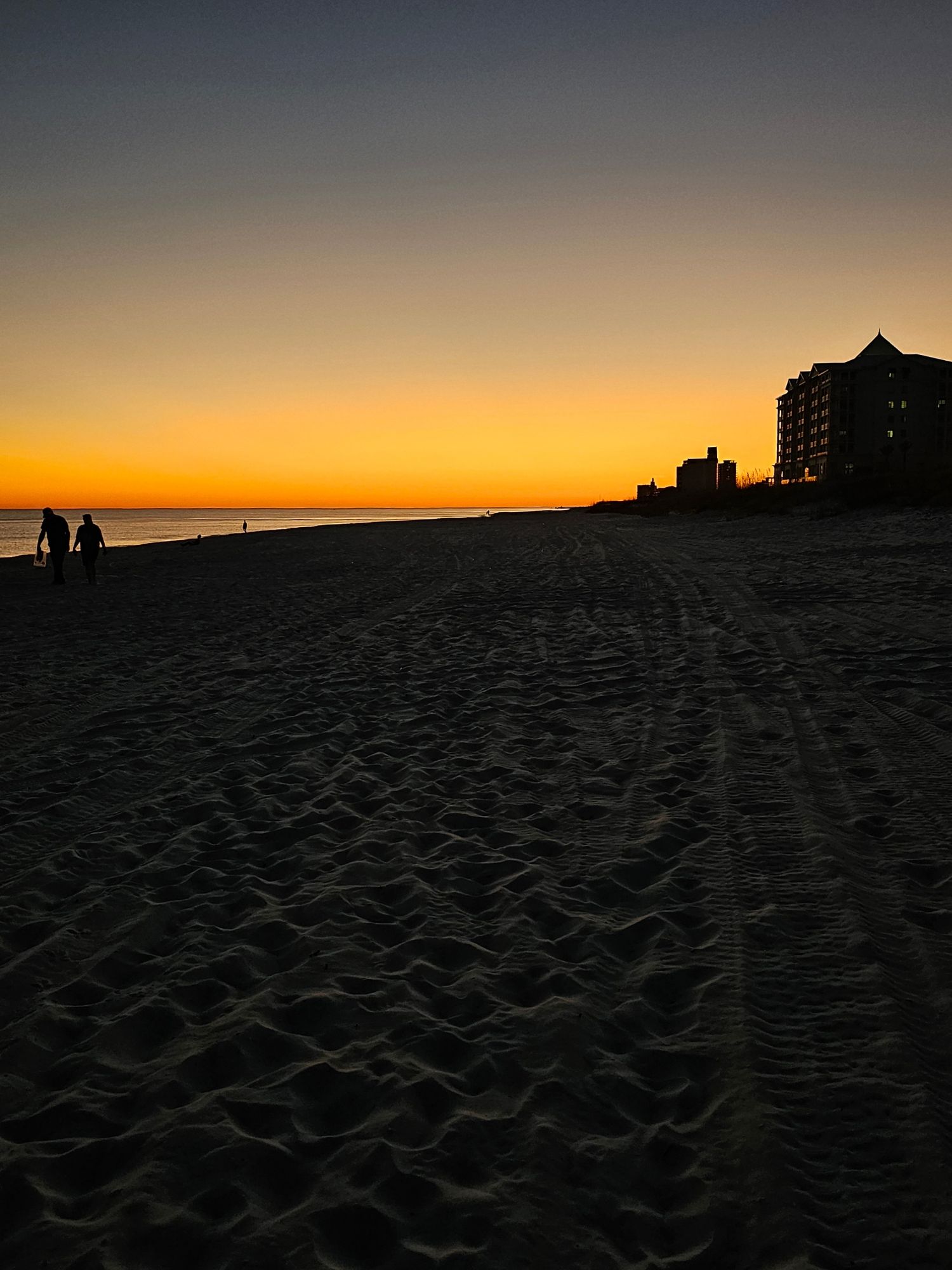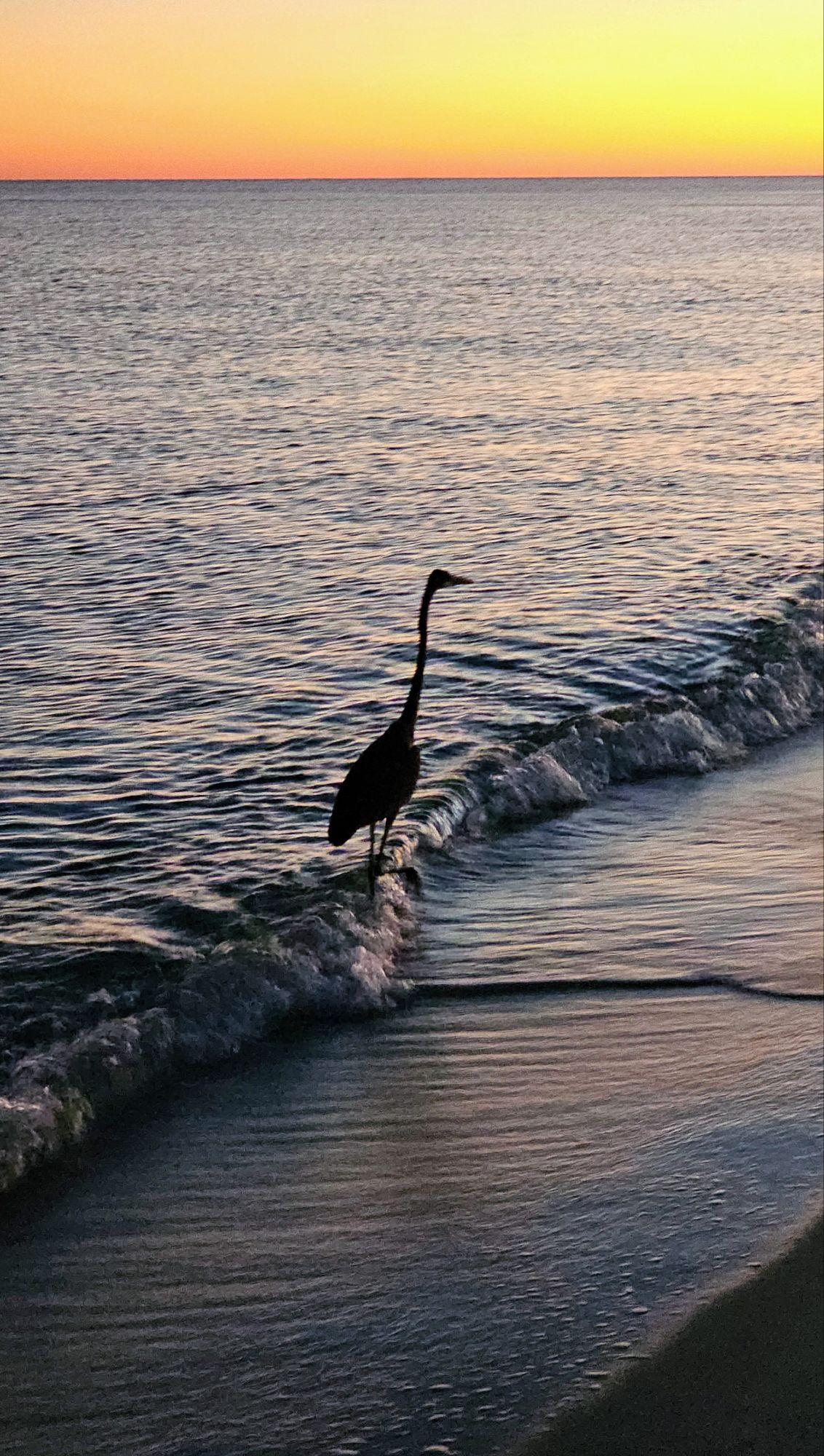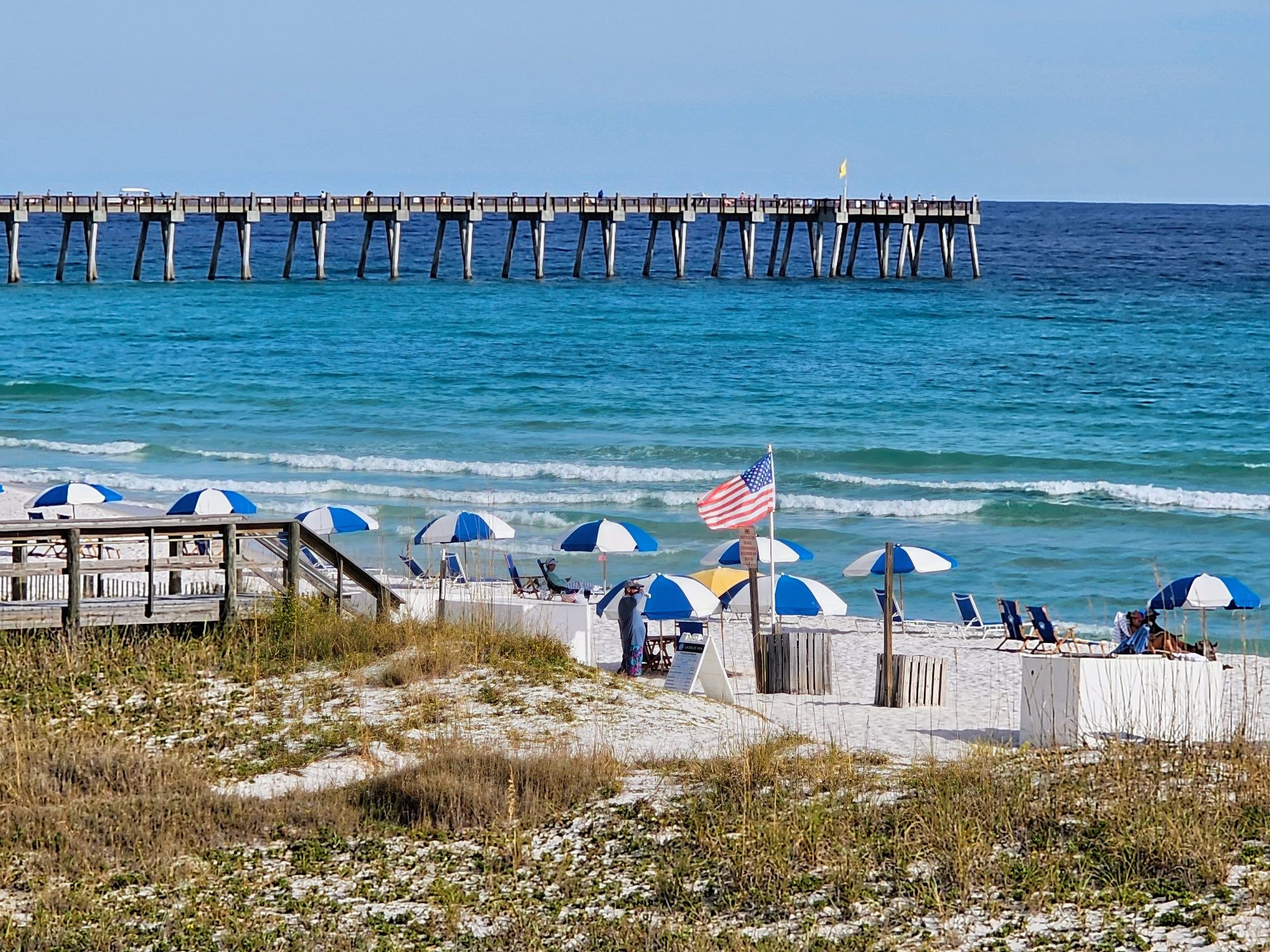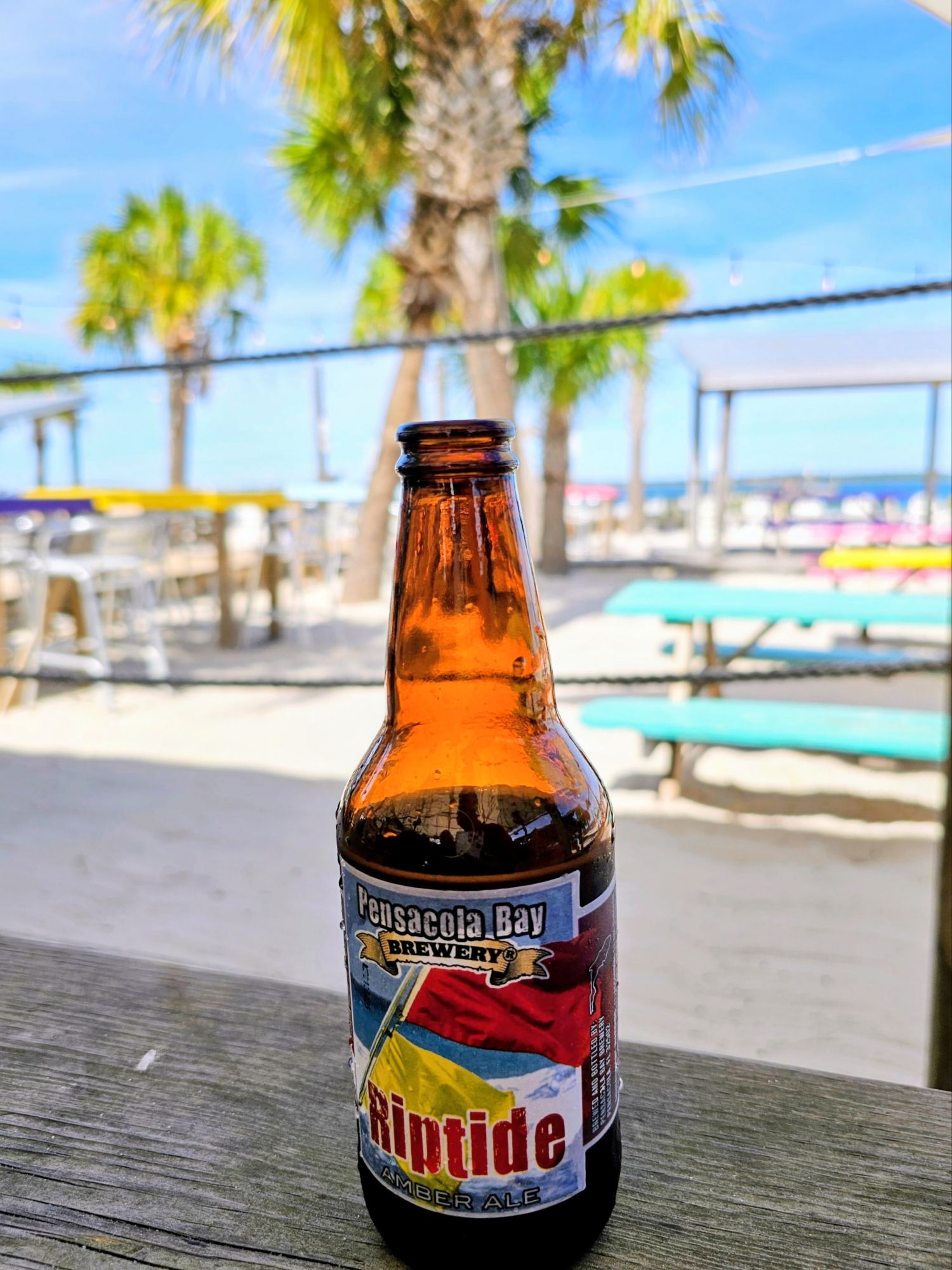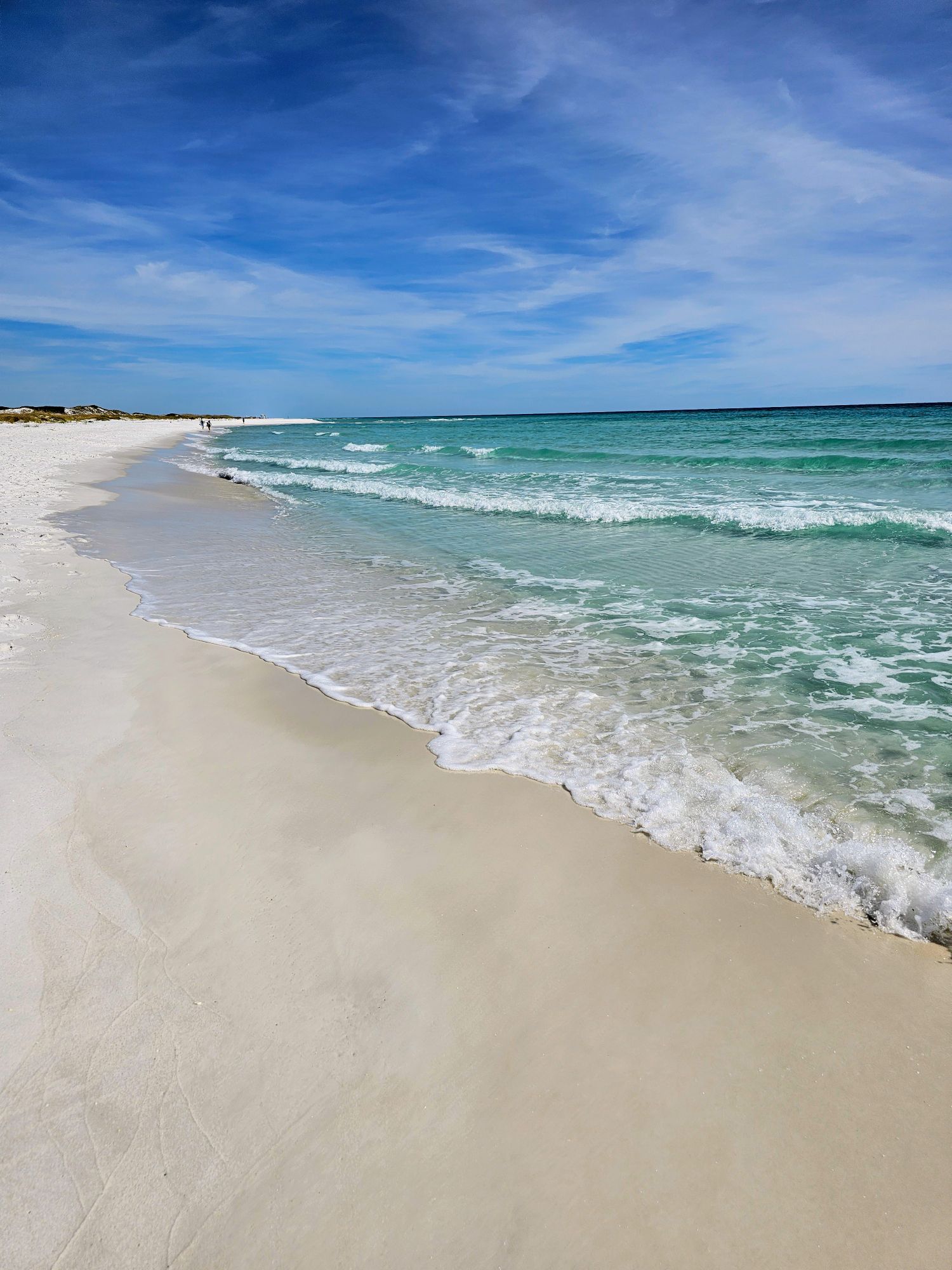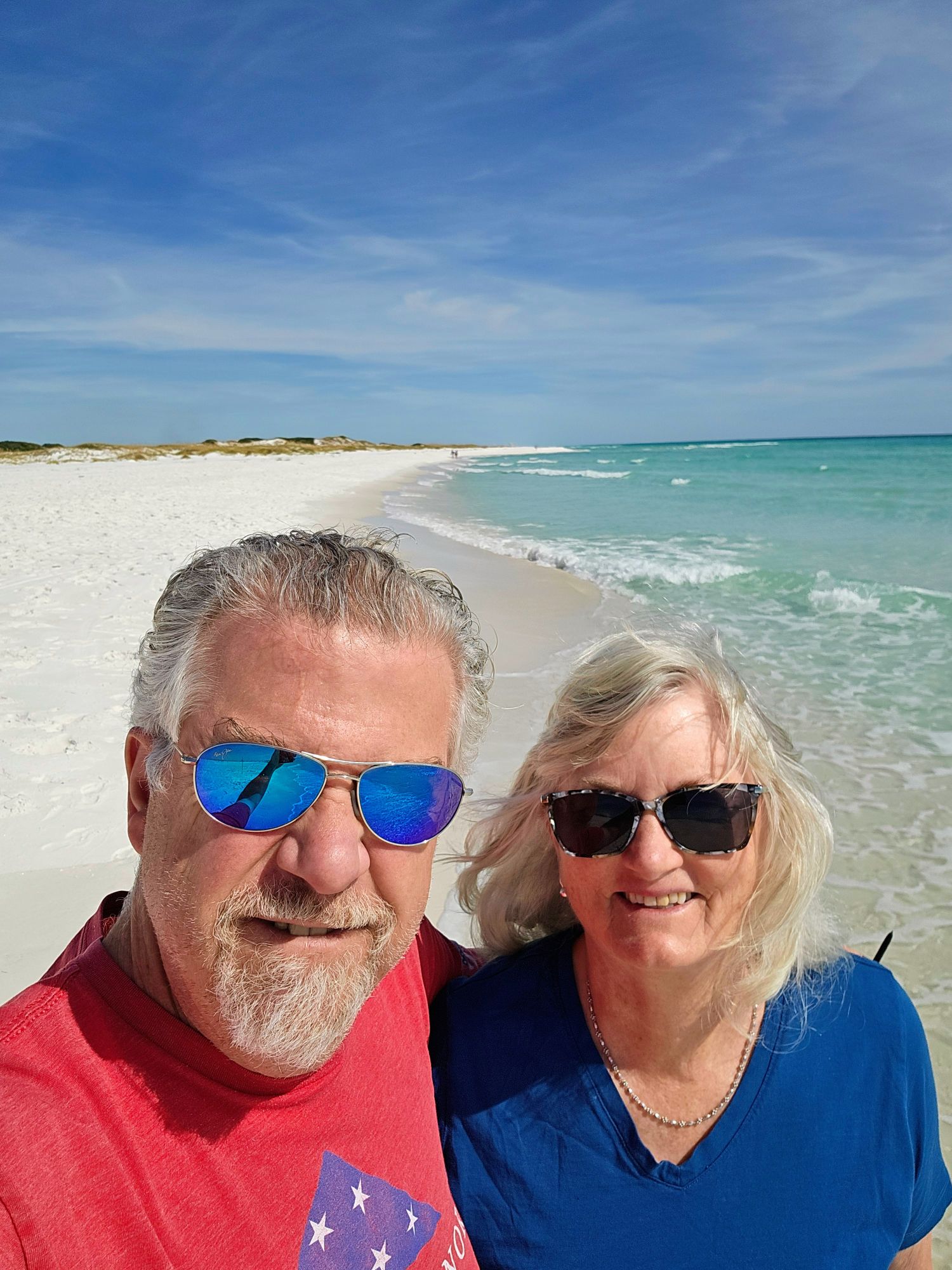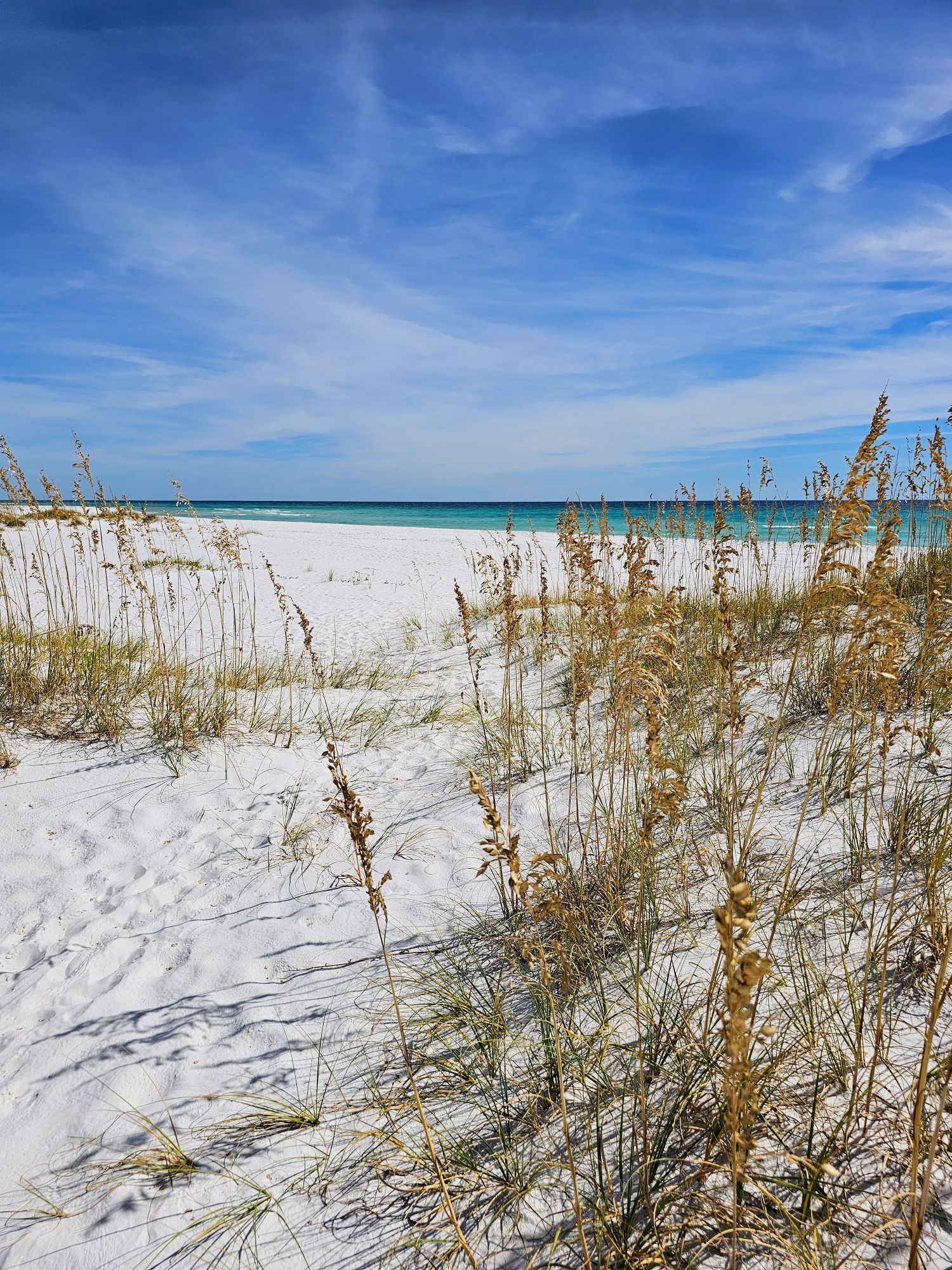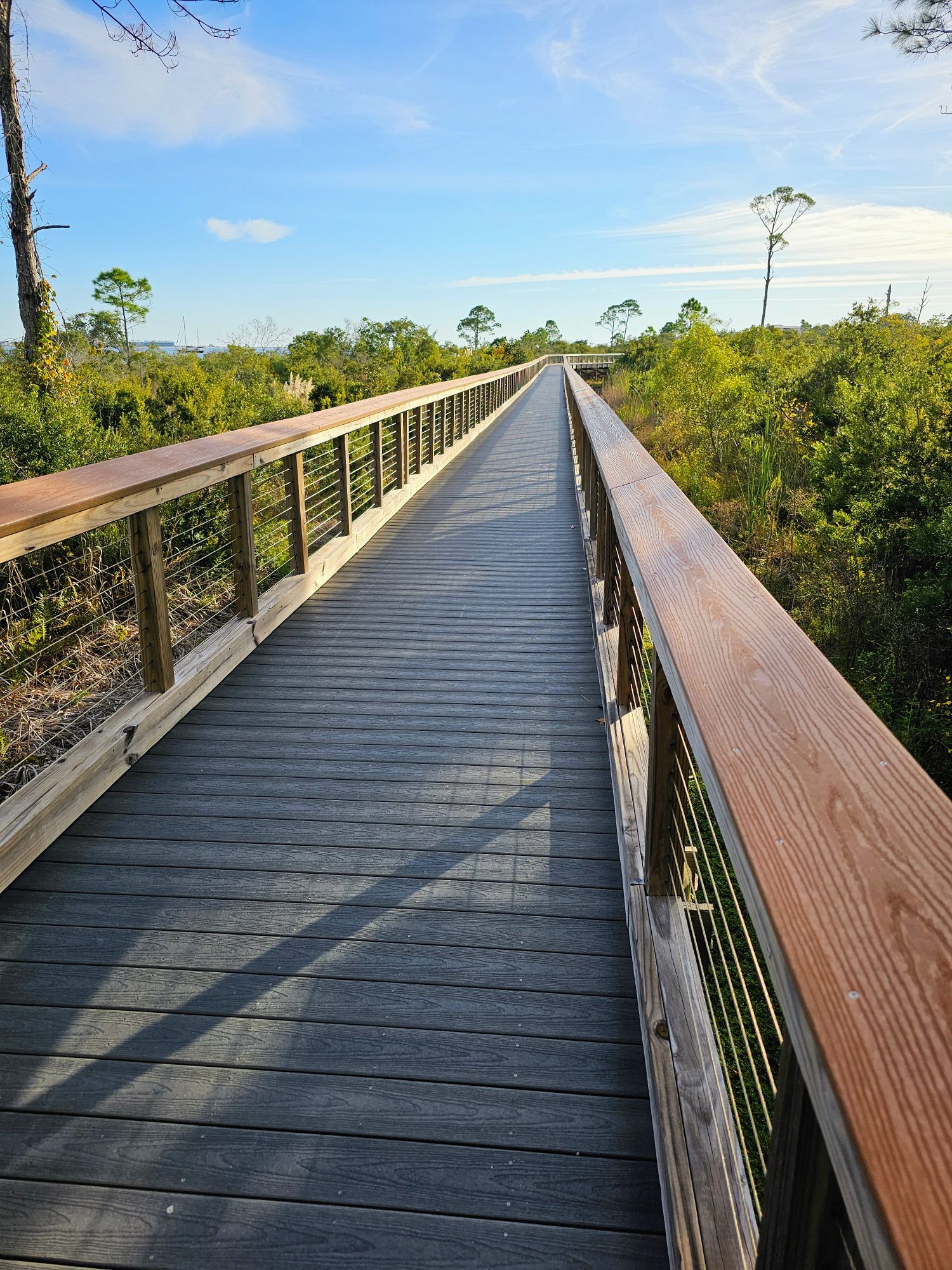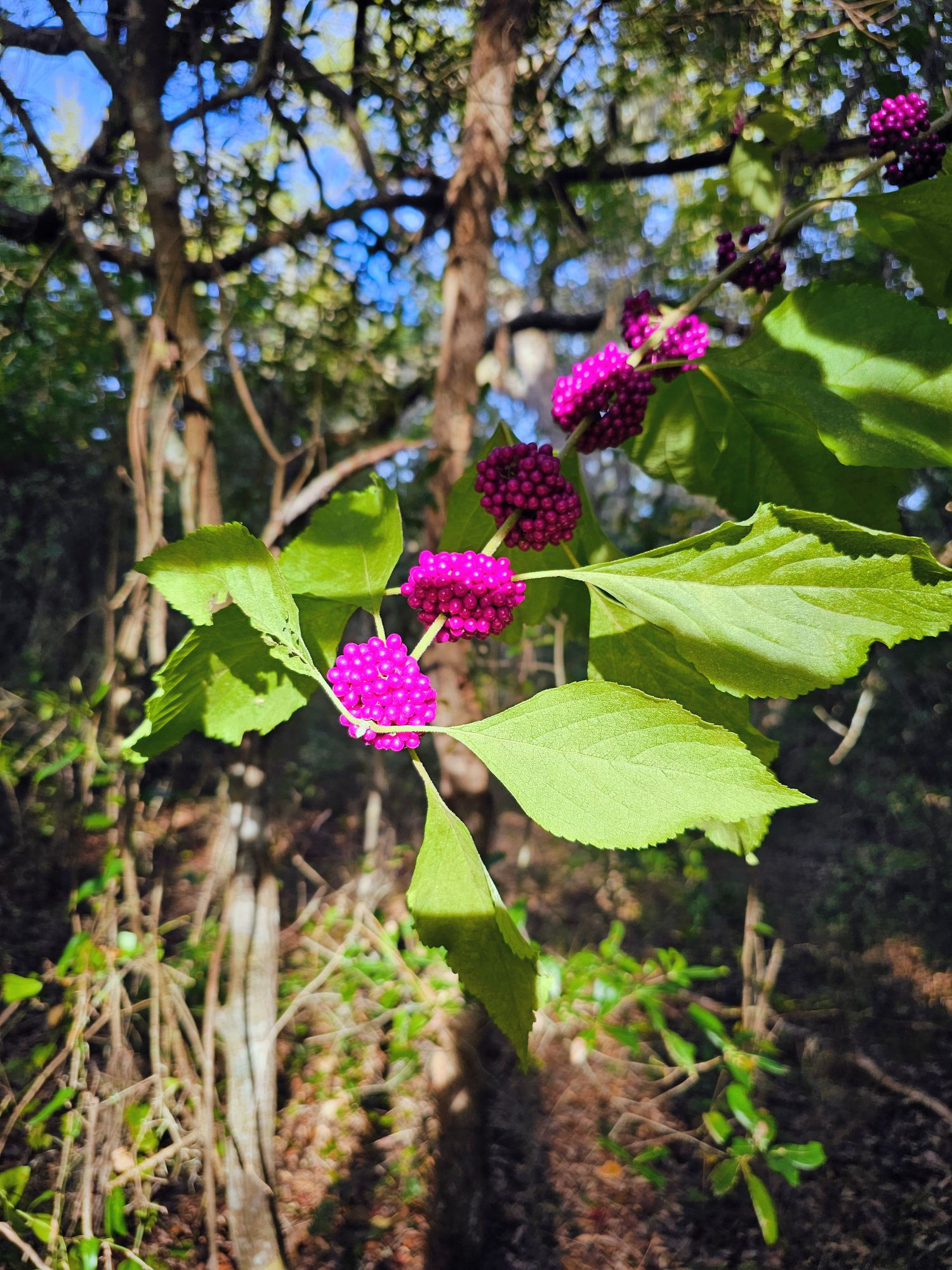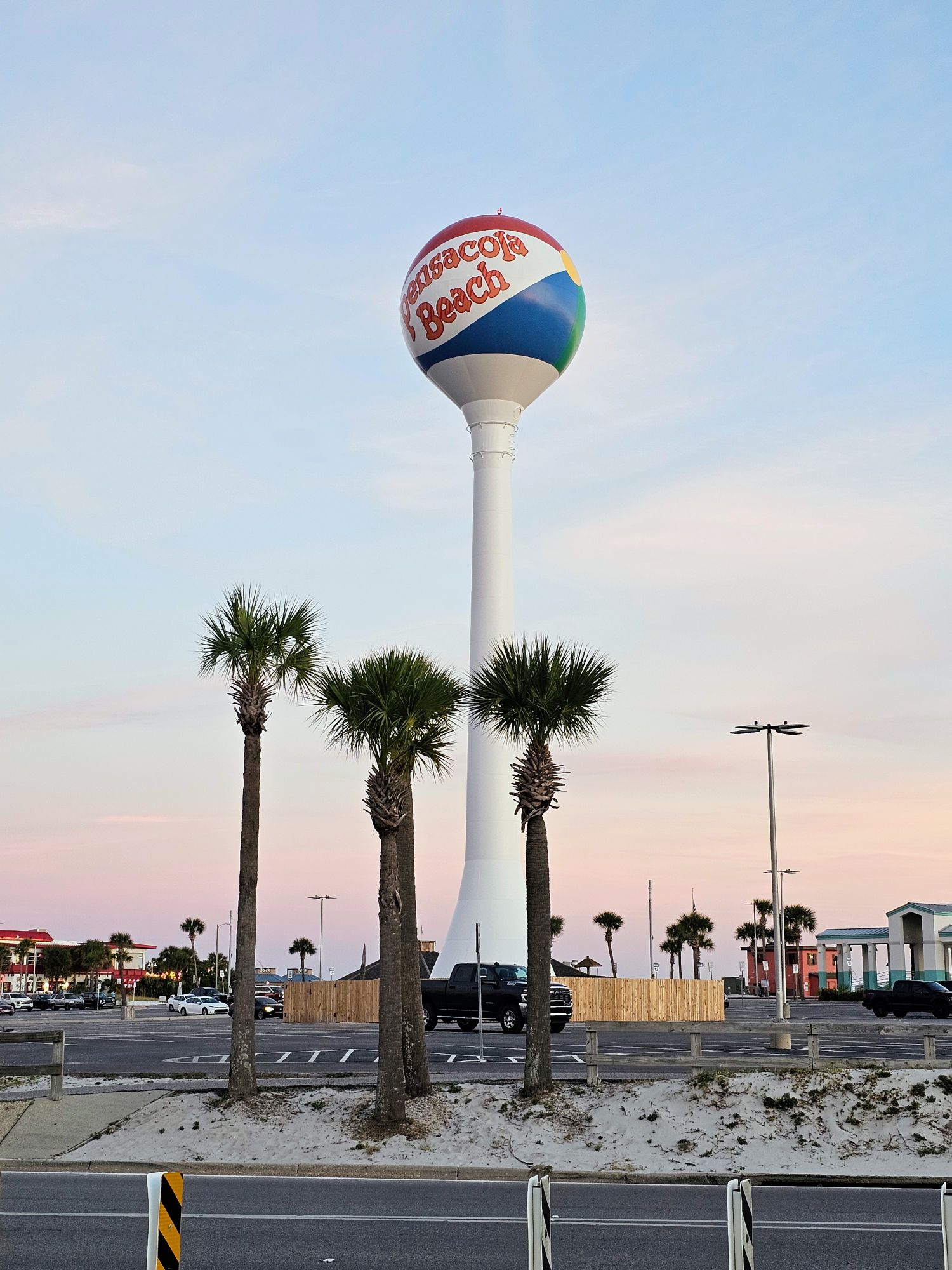We drove about two hours east from Pensacola Beach to our next stop, Rosemary Beach. Along the way we briefly stopped in the VERY crowded town of Seaside, a community that has gained fame as it was the home of the movie “The Truman Show”. We first stopped in the main square, where apparently many scenes of the movie were shot. We saw this movie a LONG time ago, so we don’t recall the scenes of this town.
Hopefully we can check it out again and this square will be obvious.
One more look at the square to hopefully jog our memory when we watch the movie again.
The cute Post Office for the little town of Seaside, FL.
We then cruised by the home used in the movie. Please note the actual address of the home is 31 Natchez Street, but because of tourists they have tried to hide the location by changing the address to 36 Natchez Street. The exterior is quite unique though, so don’t fall for the ruse.
We then made our way to our accommodation in Rosemary Beach, the nicest place we will stay on this trip, “The Pearl Hotel”. This place isn’t cheap, but I have to say the service was absolutely 5-star quality! The hotel itself is gorgeous! Our room was on the third floor, far right in the below photo.
This is another view of the hotel, which is supposed to have a Cuban influence. Not sure I see Cuban, but then I guess I don’t know Cuban??
We spent about a half hour on the beach as the weather was excellent!
The hotel provides for chairs, umbrellas, water and sunscreen, so you really don’t need to bring much of anything!
We had an excellent sunset that night! I only wish we had been on the beach for it, but we had to get to dinner shortly.
We had dinner that first night at the Havana Beach Bar and Grill (see, more Cuban influence) and earlier that day we discovered an excellent wine store that had our favorite Pinot Noir, Domaine Della Earl Stephens! The restaurant normally charges a $25 corkage, but waived it since we were guests. Winning!
The next morning this was the view from our balcony. What a beautiful spot!
Rosemary Beach was a planned community from 1995, so it’s all quite new. They have attempted to mimic a European style right down to the cobble stone streets, and it looks pretty cool!
We spent a couple of hours on the beach, as there really isn’t a whole lot to do here besides the beach. Usually not our thing, but we enjoyed some time doing absolutely nothing. Retirement has it’s challenges!
Kim even decided to get into the water! I think a wave overtook her here.
After getting back to the room we noted several wedding parties taking photos out on the lawn across from the hotel.. This was a Saturday and there were at least 4 weddings happening in town. Also, this town is well known as THE spot in Florida for Bachelorette parties. There were groups of loud, drunk women all over the place, almost like Vegas!
There was even a wedding happening in the hotel, in the rooftop bar right below our room. I’m doing my best to refrain from commenting on the wedding dress, but I’m suddenly thirsty for milk.
Another nice sunset that night!
The middle of town is all lit up, with thousands of lights on the trees. Pretty nice!
Our second dinner in Rosemary Beach was at Gallion’s, an excellent restaurant just 4 minutes walk from our hotel. Great food and a nice wine list, which is associated with the wine store I mentioned previously.
Up next, we drive to Apalachicola, and finally make it to the Eastern Time Zone!


